*This post may have affiliate links, which means I may receive commissions if you choose to purchase through links I provide (at no extra cost to you). As an Amazon Associate, I earn from qualifying purchases. Please read my disclaimer for additional details.
As you’re building your tool collection, you’ll doubtlessly come to the conclusion that you need a saw. Just as certainly as you’ll need a hammer to nail things, you are sure to need a saw to cut things. Unfortunately, picking a saw isn’t as easy as that. Just as there are many types of hammers for different uses, there are different types of saws. Knowing the differences will help you pick the right saw.
What are the differences between a circular saw and a miter saw? A circular saw is a handheld, general use power saw that can be taken anywhere to make a lot of different types of cuts, from cross cuts to ripping plywood, though it usually produces rough cuts. A miter saw is a stationary, specialized power saw designed to efficiently and precisely cut trim or framing boards at an angle or bevel.
People often wonder which type of saw they should buy, or at least which they should buy first. As a general rule, because circular saws are less expensive and more versatile, they are typically most people’s first saw.
If you plan to do work that requires a lot of precise cuts, especially if they are angled or beveled, such as furniture or frame making, you should get a miter saw.
Table of Contents
What is the Difference Between a Circular Saw and a Miter Saw?
In order to understand the difference between circular saws and miter saws, let’s first take a look at what each type of saw is.
Circular Saws

The circular saw is a handheld saw with a circular, spinning blade oriented vertically. Modern circular saws are electric powered either via a power cord or a battery pack. The blade is typically about 7 inches in diameter.
They are relatively small and lightweight, making them extremely portable. They are capable of doing a lot of different types of cuts, though they usually do so less precisely than specialized saws.
Pros
Circular saws are extremely portable. Their cases are essentially large briefcases, so it’s easy to bring them to the job site even if you only have a little bit of room in your trunk.
Even on-site, circular saws can be used just about anywhere. An extension cord or a battery pack is all you need to bring the saw to the thing that needs to be cut.
They are also extremely versatile. Simply by switching the blade, you can cut just about any type of material, from wood to metal.
Because it is handheld, the circular saw can be used to make just about any type of cut. This includes:
- Straight
- Angled
- Beveled
Circular saws are most beneficial for rip cuts. These are long cuts, often in the same direction as the grain of the wood.
If you need to split a 2 by 4 in half the long way, or to cut a piece of plywood in half, for example, you’ll need a circular saw to do so.
Circular saws are not very expensive, often costing less than $100. Because they are cheap and extremely useful, they are ubiquitous on job sites. If you need to make a cut, you can probably do it with a circular saw.
Cons
A lot of the pros of circular saws come with corresponding cons. Their extreme portability, for example, comes at the expense of accuracy. When you are making a cut with a circular saw, you are holding the saw in place by hand.
The cut’s accuracy depends on your ability to steadily move a 15-pound tool, which has a motor spinning a blade at high RPMs. It can also kick back while it is cutting if it hits knots or other tough parts of the wood.
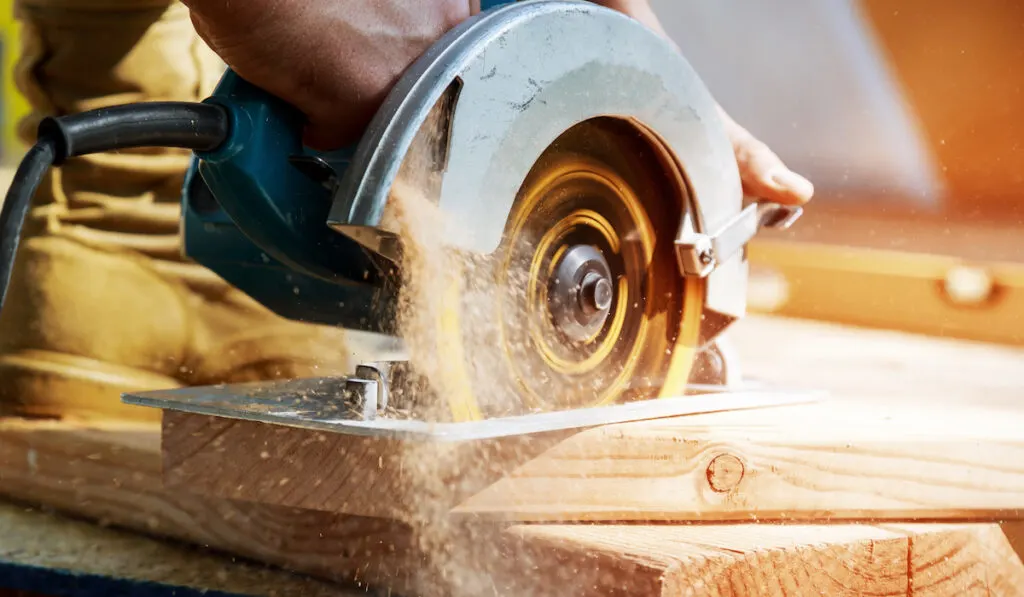
You can steady the path of the saw by creating some sort of scaffolding. A metal speed square clamped in place as a guide, for example, is a great way to ensure a straight cross cut.
Angled cuts, however, require a lot more elaborate bracing. Even so, the circular saw blade’s wide teeth and relatively low RPM will always result in a rougher cut than a miter saw.
Not only does the portability of the circular saw result in a reduction of accuracy, it also results in a corresponding reduction in safety.
The saw must be held and moved independently, with the only safety feature being a shield that partially covers the blade when not in use but is pushed aside during cutting.
Miter Saws
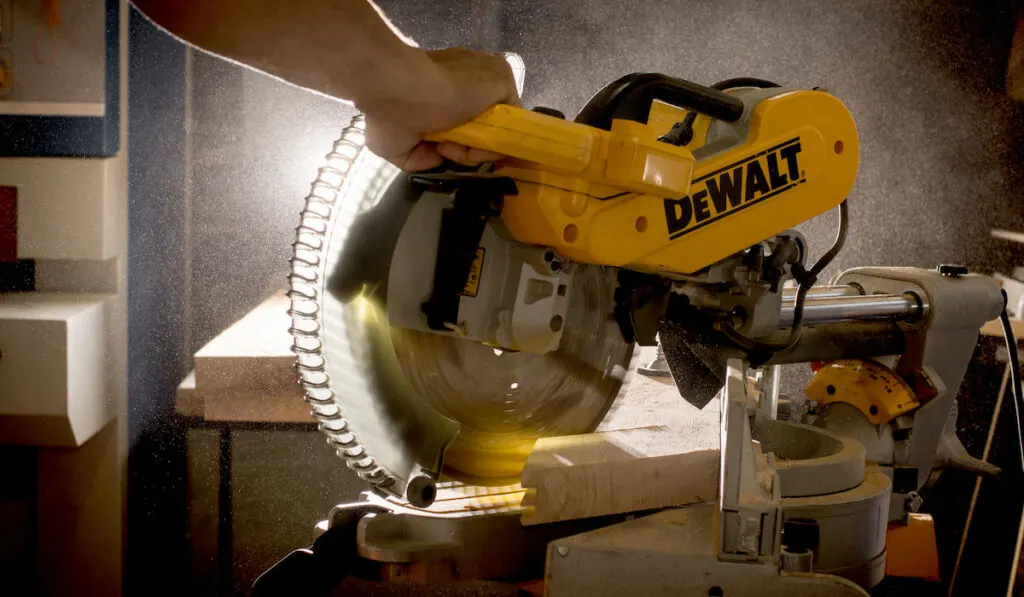
The miter saw, developed in the 1970s, replaced the miter box. It is a stationary saw that is designed for miter (angled) cuts common in framing and other finishing work.
The miter saw is essentially a circular saw mounted on a pivoting arm. The circular blade is usually 10 to 12 inches in diameter and aligned vertically (unless the saw is set to cut at a bevel).
The saw consists of a rack to which a board is secured. The blade is engaged and pulled down through the board in order to cut it. This can be done at a 90-degree angle (cross cut) or some set angle (miter cut).
The miter saw can either cut straight down or cut through the board at a slant (bevel cut). A compound cut is one that is both mitered and beveled.
Pros
A miter saw is a specialty saw designed to cut miter and bevel cuts quickly and precisely. It is most useful when you need to miter cut many boards (usually at a 45-degree angle) precisely enough that they can be fit together with no gap. This is especially useful in trades that include:
- Furniture making
- Frame building
- Cabinetry
- Finishing work
Using a miter is relatively safe and easy. Because the blade only cuts in one spot, it is not as intimidating to beginners as a circular saw can be.
There can be some kickback when the blade bites into the wood, but because you only need to stabilize the wood and not the saw itself, it’s easier to manage.
Cons
Miter saws, unlike circular saws, are stationary. They need to be set up at a table or workstation and the boards that need to be cut need to be able to be brought to the saw.
Miter saws are also larger, so if you are transporting one, you’ll need a truck or van, or at least a completely empty trunk or backseat.
As a specialty saw, miter saws are only capable of the types or cuts they are designed for, such as:
- Cross cuts
- Miter cuts
- Bevel cuts
- Compound cuts
Other types of cuts, such as ripping longboards or sheets of plywood, are not possible.
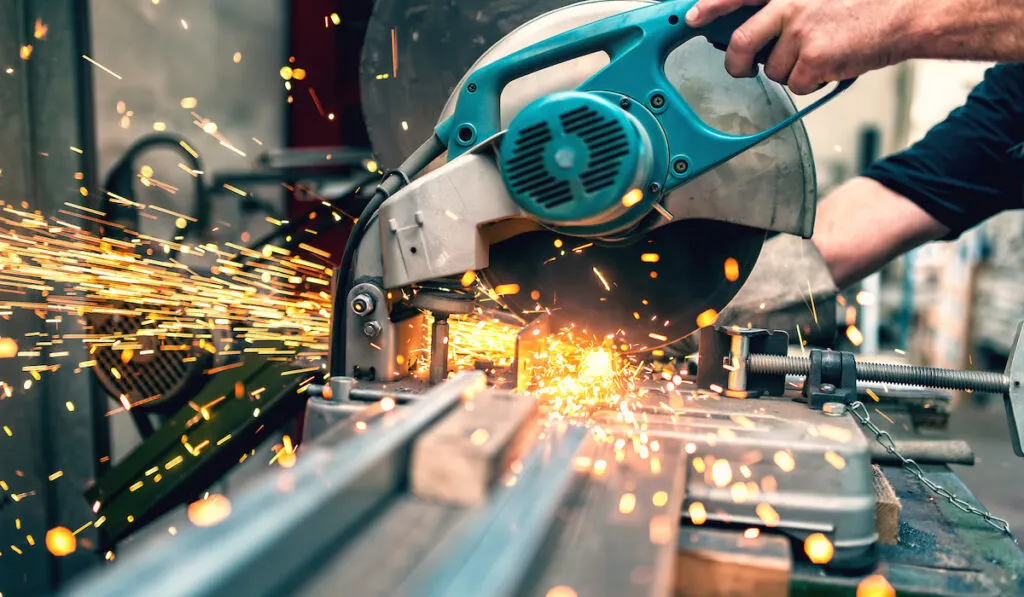
A miter saw also has a limited cutting width. Because the blade can only be pulled down through the board, the width a miter saw can cut is limited by the size of the blade.
Theoretically, a blade can cut the width of its diameter, which is typically 10 or 12 inches. In reality, however, the mechanisms that spin and move the blade inhibit this, and the actual cut capacity is close to the radius (half the diameter) of the blade.
Sliding miter saws increase the cutting width of miter saws by attaching the saw on an arm that not only pivots, but also extends. This can often double or triple the width a miter saw can cut. This is useful because when a cut is angled through a board instead of cross-cut, it requires a much longer cut.
Versatility
If you are looking for a saw that can do just about anything; a circular saw is for you. It is a general-purpose saw, and, with a little practice or finagling, can be used to make just about any type of cut. A miter saw, on the other hand, is a specialty saw that only does a few types of cuts very well.
Circular Saws Can Make Most Types of Cuts

A circular saw is a portable circle of cutting power. The saw moves and the cutting material stays in place. This not only means that a circular saw can be taken anywhere, and brought to the thing that needs to be cut if the thing is too big to move, but it can also be moved along the cut. This allows the ripping of long pieces of wood.
Circular saws are also not limited to cutting wood. By simply switching out the blade you can easily cut:
- Metal
- Brick
- Concrete
If you can imagine it, there’s probably a way to cut it with a circular saw.
Circular saws are even capable of making miter and bevel cuts, though it requires more work and skill to pull them off.
A miter cut can be achieved with a circular saw if you measure and find a way to brace the path of the cut.
Bevel cuts are achieved by adjusting the slant of the circular saw’s “base” or “shoe,” though it is more likely to kickback in this setting.
Miter Saws Can Only Make 4 Types of Cuts
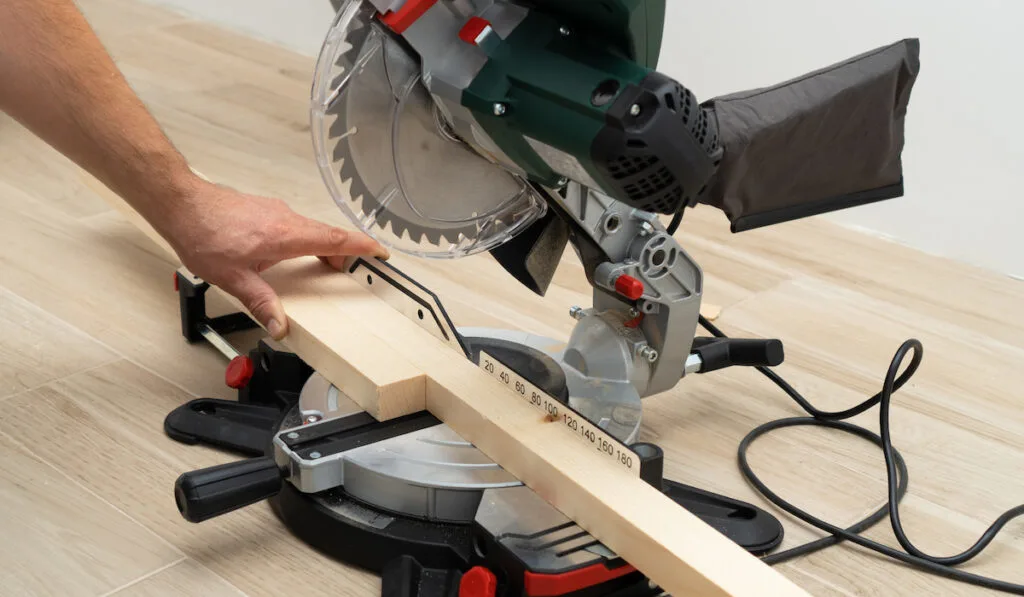
A miter saw, on the other hand, is a specialty saw. It is designed to make a few types of cuts quickly and easily. A miter cut, after which the miter saw is named, is a cut that is at an angle through the board being cut. This is useful in applications like framing and furniture making when two angled boards (usually at 45 degrees) are joined seamlessly.
Any other type of cut, however, is not possible. There is a fence that holds the board in place under the miter saw’s blade.
While this ensures clean cuts on the types of cuts a miter saw is designed for, it prevents passing boards under the blade for other types of cuts, such as ripping long boards or cutting plywood.
If you want to cut metal instead of wood, you need a different saw. Chop saws are like miter saws in design, except that they are built to cut metal at only 90 degrees and are reinforced with material that will not catch fire when showered by sparks during the cut.
Accuracy
When it comes to accuracy, the circular saw’s versatility results in low accuracy. While circular saws are general purpose, miter saws are a specialty saw designed to make a few cuts extremely accurately.
Circular Saw Cuts Are Always Rough and Inaccurate
A circular saw is a handheld power saw. Its accuracy is limited by how steady you are able to hold it, which is no easy task when it is spinning at a high RPM and kicking back against the wood it’s biting into.
The path the circular saw travels is likewise dependent on your fine motor skills unless you go to the trouble of setting up scaffolding or bracing to guide the saw’s path.
Because circular saws can be used anywhere, they are often used in situations in which the cutting material isn’t properly secured.
Often one end of the board is secured, either by being braced or clamped to a sawhorse or otherwise attached to a structure. The other end, however, is most often unsecured.

As the board is cut through, eventually there reaches a point at which the weight of the slag end of the board is more than the increasingly reduced amount of uncut wood can support.
At this point, instead of the saw being allowed to cut through the board cleanly, the board will break off at the weakened point, leaving a jagged edge instead of a smooth cut.
Even in the most controlled cuts, a circular saw will produce a rougher cut than a miter saw. This is because the blades of circulars are smaller, spin at lower RPMs, and have less teeth than miter saw blades.
Circular saw blades are typically about 7 inches in diameter as opposed to 10 or 12 inches for miter saws, and the larger teeth gaps result in rougher cuts.
Miter Saws Are Designed to Make Accurate Cuts
Because they are specialty saws, miter saws are designed to make the most accurate:
- Cross
- Miter
- Bevel
- Compound cuts
They achieve this by bracing the board in a fenced base. It can be clamped in place if desired, but even the fact that both sides of the cut are supported by the base is enough to ensure a clean cut.
Miter saws also have larger blades with higher teeth count that spin at higher RPMs than circular saws. This ensures a more accurate cut because the small amounts of wood the blade grabs is never stronger than the saw motor. This ensures that the wood is cleanly cut instead of torn or splintered.
Just as the board is secured, so is the blade. It can be adjusted and set at any angle or bevel. Because both the board and saw are secured, there is no chance that kickback when the blade bites into the wood can throw off the alignment and result in an uneven cut.
Safety
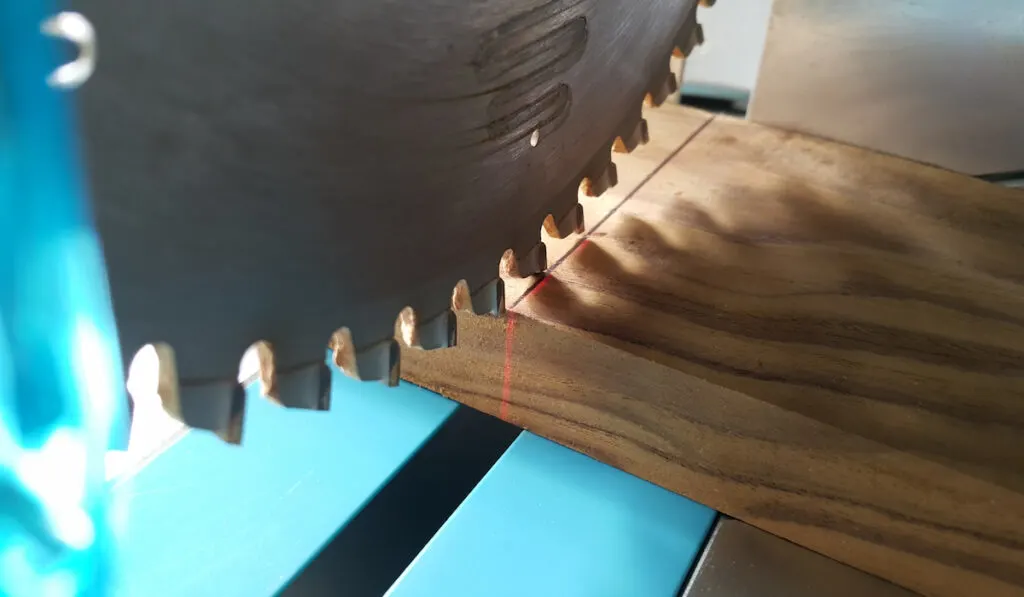
When it comes to safety, miter saws win hands down. Miter saws only cut one place and only where you tell them to, whereas circular saws can cut anywhere and anything if you aren’t careful.
Circular Saws are More Dangerous Because They are Unsecured
The freedom of mobility of circular saws come at the cost of greater safety risk. Nothing is holding the saw back from cutting where you want it to go, but likewise nothing is holding it in place to keep it from cutting where you don’t want it to go.
Unless you set up extensive scaffolding or bracing, there is nothing preventing the saw from going where you don’t want it to go.
In most cases you will be guiding the saw manually. If you trip or slip or fall, or guide the saw somewhere it shouldn’t go, there is no structure in place to stop it.
The difficulty of this task is greatly amplified when the motor is spinning the blade at high RPMs and the saw experiences kickback as it bites into the wood.
The main safety feature of a circular saw is a hemicircular blade guard that uses a spring to partially cover the blade when not in use. When in use, however, the shield is pushed out of the way by the wood, and anything that is in the path of the blade is unprotected.
Miter Saws are Safe as Long as You Keep Your Hands Clear
Miter saws, on the other hand, are stationary and only cut in one spot. There Is no movement during the cut other than the blade moving down through the wood, so as long as you make sure your hand is not in the path of the saw before engaging the motor, you’ll be safe.
Why would you need one vs the other?
As discussed above, circular saws are a general saw and miter saws are a specialty saw. If you need a saw that is cheap, portable, and can make a lot of different types of cuts, you need a circular saw. If you need to make a lot of accurate cuts, especially cuts that are angled or beveled (or both), you need to get a miter saw.
Would you ever need both?
If you often need to make precise angled or beveled cuts, and also need to make other types of cuts in harder to reach locations, you’ll need both a miter and a circular saw.
Which to buy first?
If you know you will only be cutting boards to size (at an angle or bevel) you should invest in a miter saw first. If you are unsure what types of cuts you’ll need to make or know that you need to rip boards or cut things you cannot bring to the miter saw, you should buy a circular saw first.
